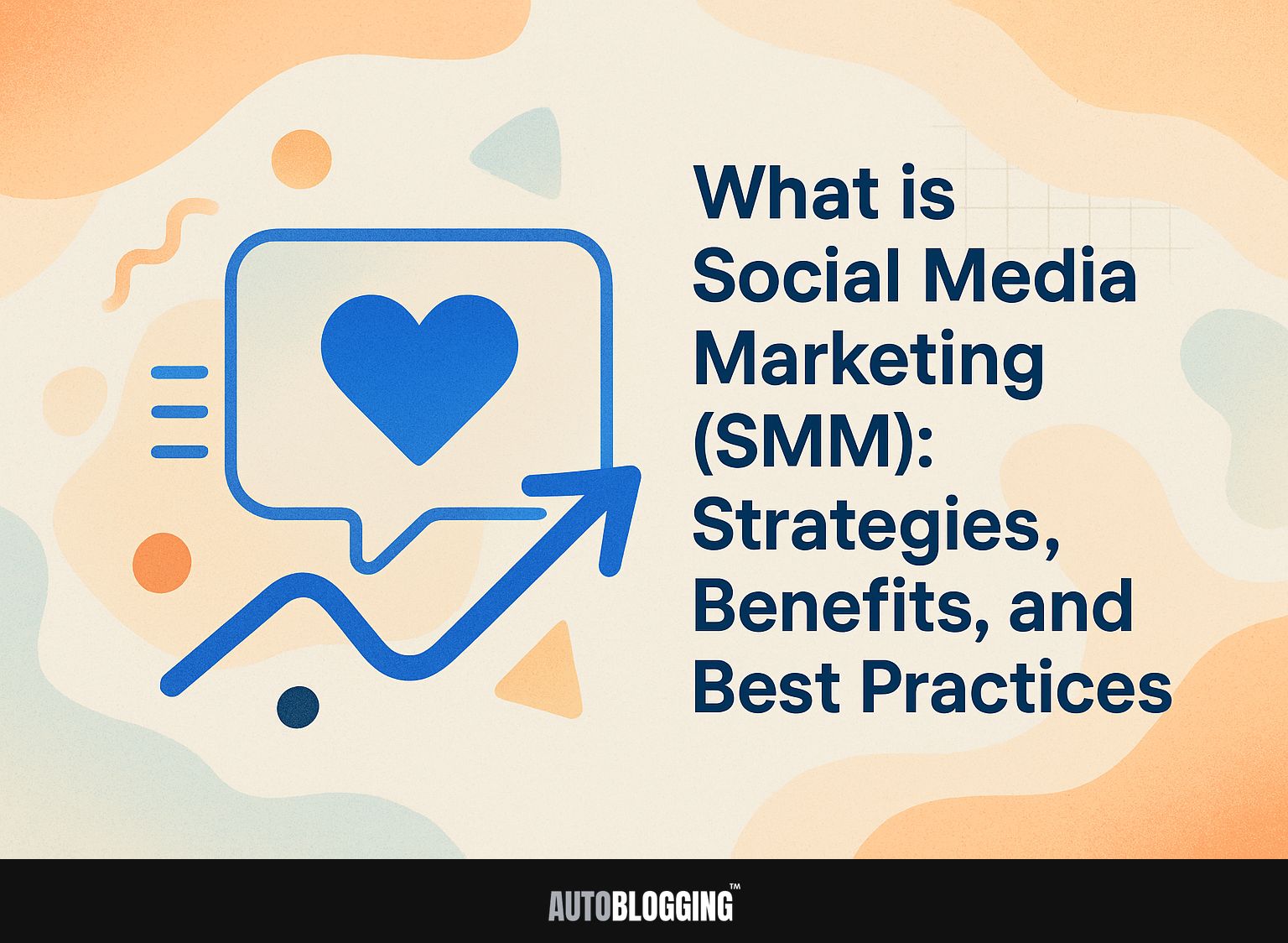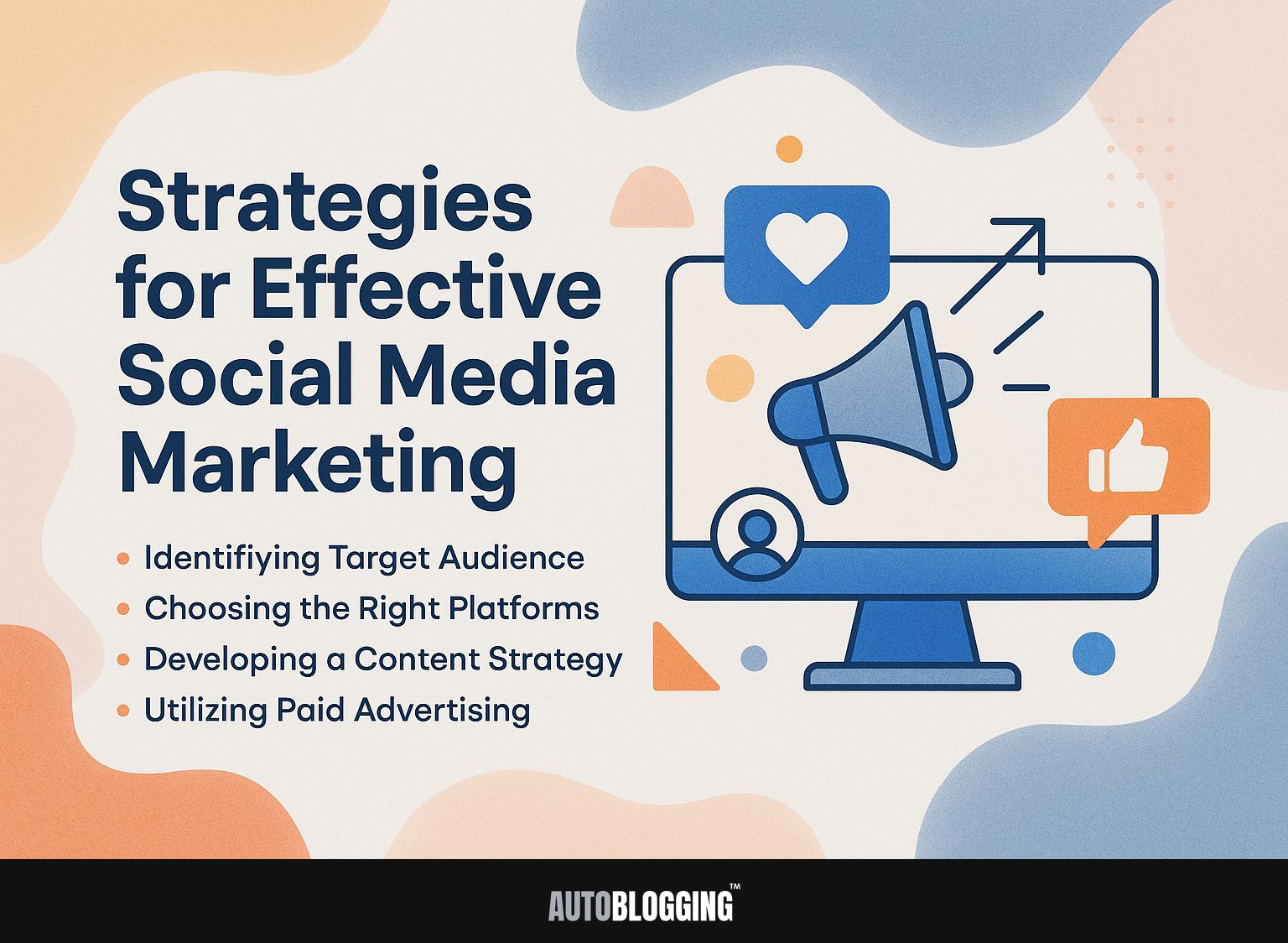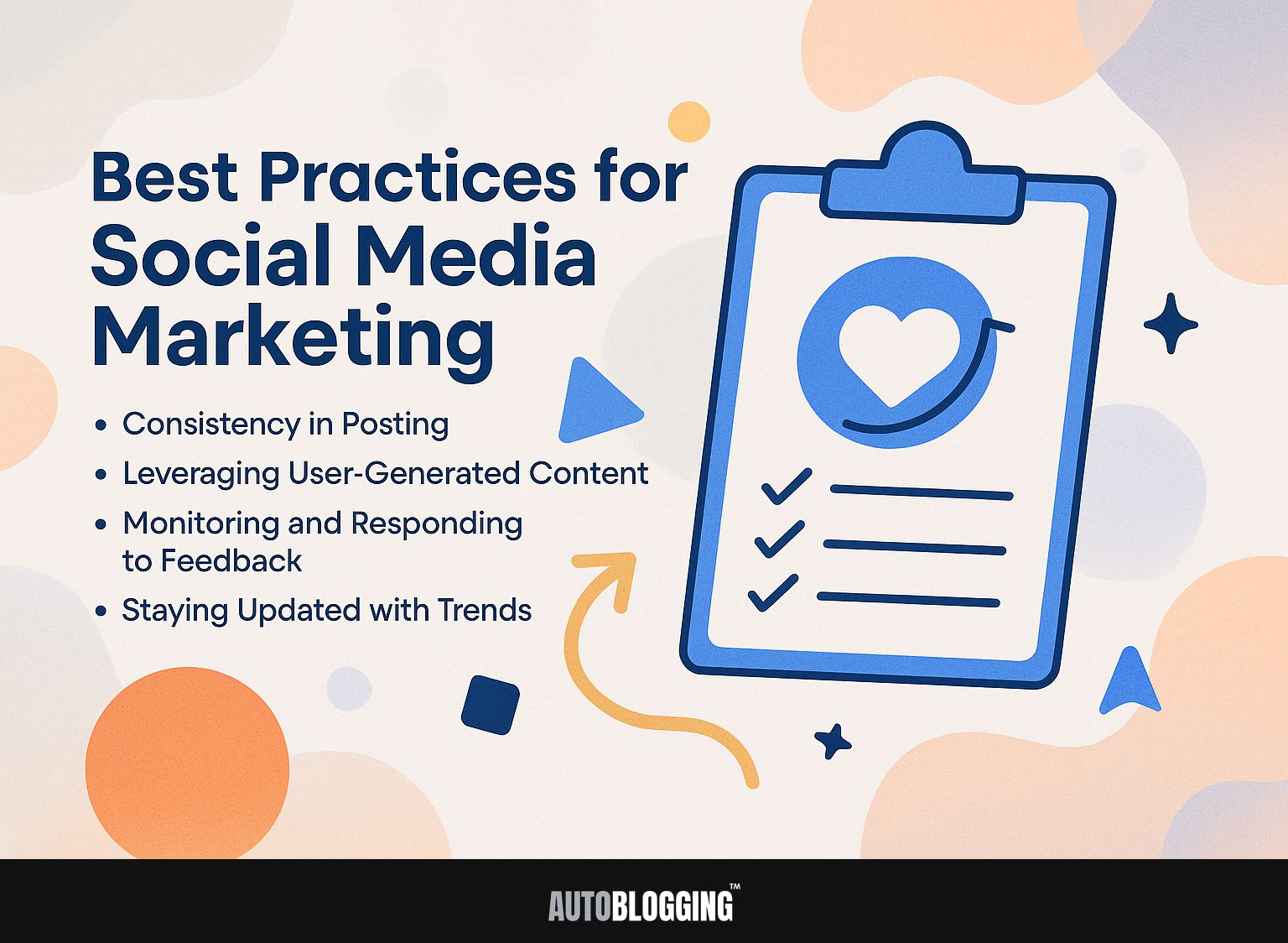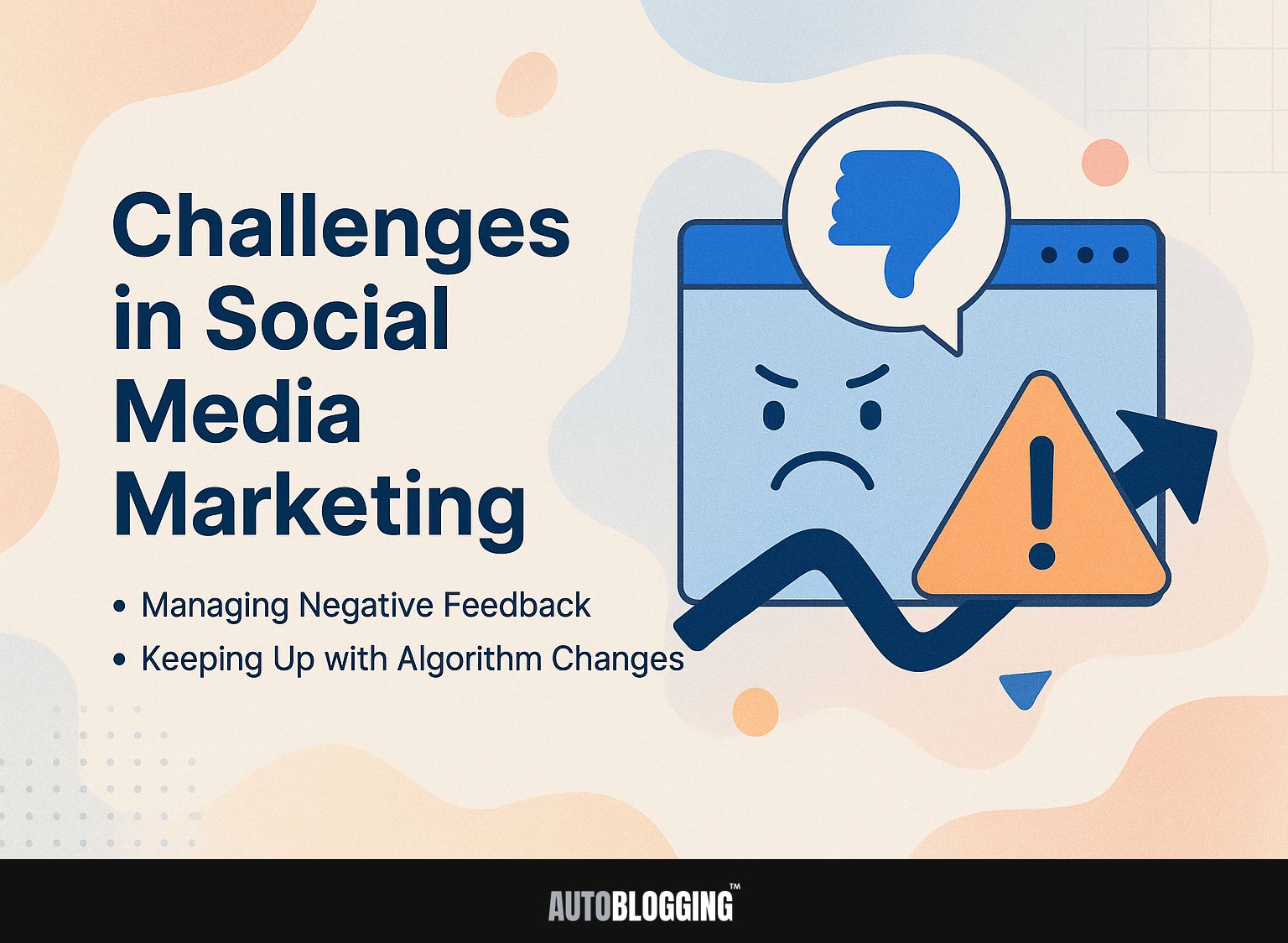
Social media marketing (SMM) has changed how brands interact with people on platforms like Instagram and X. By using social media effectively, businesses can increase awareness of their brand and improve interaction with customers. This article discusses practical methods, advantages of social marketing, and useful tips to manage today’s online environment. Learn how to improve your social media work and connect with your audience effectively!
Key Takeaways:
- Social media marketing is an important tool today, enabling businesses to communicate and interact with their intended audience.
- Effective SMM strategies involve identifying target audience, utilizing the right platforms, and implementing a strong content strategy with paid advertising.
- Benefits of SMM include more people knowing about your brand, better interaction with customers, and more sales. It is important to remain consistent, use content from users, and keep up with trends.
Contents
- Key Components of Social Media Marketing
- Strategies for Effective Social Media Marketing
- Benefits of Social Media Marketing
- Best Practices for Social Media Marketing
- Challenges in Social Media Marketing
- Frequently Asked Questions
- 1. What is Social Media Marketing (SMM)?
- 2. What are some of the strategies used in Social Media Marketing (SMM)?
- 3. What are the benefits of Social Media Marketing (SMM)?
- 4. What are some best practices for Social Media Marketing (SMM)?
- 5. How do I measure the success of my Social Media Marketing (SMM) efforts?
- 6. Can any business benefit from Social Media Marketing (SMM)?
1. Definition of SMM
Social Media Marketing (SMM) is creating and posting content on different social media sites to meet marketing and branding goals.
To execute a successful SMM strategy, focus on three essential elements:
- Audience engagement
- Content creation
- Platform selection
Interacting with followers on Facebook can increase brand loyalty, while attractive posts on Instagram can lead to more clicks.
Use tools like Hootsuite to plan and check analytics, Canva to create graphics, and Buffer to simplify posting.
Try using various content formats-like videos, polls, or stories-to find out which your audience likes most. Change your strategy based on their feedback and the data you collect.
2. Significance of Social Media Marketing Today
With 4.48 billion people using social media, SMM is important for increasing brand visibility and building customer relationships.
The importance of social media marketing (SMM) is highlighted by data showing that 92% of marketers think it is essential for their business.
Gen Z users, for instance, spend an average of 3 hours daily on platforms like TikTok and Instagram, while Baby Boomers average just 30 minutes on Facebook. This disparity highlights the need for targeted strategies.
Brands should leverage tools such as:
- Hootsuite for scheduling and analytics,
- Canva for eye-catching graphics,
- Surveys to capture diverse audience preferences effectively.
Key Components of Social Media Marketing
Good social media marketing relies on key parts: creating content, interacting with your audience, and strong analysis to track how well you’re doing.

1. Content Creation
Creating content is essential for social media marketing, using text, images, and videos to engage target audiences. To improve your social media marketing strategy, try using different types of content.
For example, blog posts can establish authority, while infographics can simplify complex data and increase shares.
Videos boost engagement significantly. Tools like Canva let you make great visuals, while BuzzSumo helps find popular topics that connect with your audience.
A content calendar helps organize your posting schedule, providing a variety of posts across platforms, and keeping your audience interested and updated.
2. Audience Engagement
Building a relationship with your audience involves genuinely interacting with users, fostering a sense of community, and creating long-term brand loyalty by being attentive to their needs.
To improve how your audience connects with you, use strategies like polls, Q&A sessions, and live videos.
Use tools like Sprout Social to manage discussions and check engagement figures to verify your plans connect with your audience.
For example, running a monthly poll on Instagram Stories can greatly increase interaction rates. Running live Q&A sessions on Facebook every two weeks lets us talk directly with our audience, creating a closer bond. Monitoring engagement data will help you adjust strategies for maximum impact.
3. Analytics and Metrics
Facts and numbers show how effective social media marketing strategies are and help in making decisions later on. To make the most of analytics, concentrate on important metrics such as engagement rate, conversion rate, and reach.
Engagement rate shows how much your audience connects with your content; try to achieve more than 2%. Conversion rate measures how many users take desired actions, like signing up for newsletters; strive for at least 5%.
Use tools like Google Analytics for detailed website traffic analysis and Sprout Social for tracking social media data.
Set monthly goals based on these KPIs to track progress and adjust strategies accordingly, ensuring continuous improvement.
Strategies for Effective Social Media Marketing
Putting successful plans into action is key to reaching marketing targets and strengthening brand image through social media. Implementing effective on-page SEO techniques can further enhance these efforts and ensure content visibility across digital platforms.

1. Identifying Target Audience
Knowing who your audience is helps you create content that grabs their attention and keeps them interested.
To carry out successful audience research, begin by using surveys on platforms such as SurveyMonkey or Google Forms. Ask targeted questions about preferences, interests, and challenges.
Supplement this with social listening tools such as Hootsuite or Brandwatch to monitor conversations about your industry. Use Facebook Audience Insights to get information such as age, gender, and location.
By using this information, you can create detailed audience profiles that help shape your content plan, ensuring your messages reach your intended groups.
2. Choosing the Right Platforms
Selecting the right social platforms is critical for reaching your audience effectively and building a strong online presence.
Knowing who your audience is helps you pick the right platforms. For instance, TikTok, with 60% of its users aged between 16-24, is ideal for brands targeting Gen Z with engaging video content.
LinkedIn focuses on working professionals, and more than 54% of its users earn over $75,000 annually, which makes it a good choice for B2B marketing. Simultaneously, Facebook is popular with people of various ages.
By matching your content plan with these audience groups, you can make your messages connect better.
3. Developing a Content Strategy
A clear plan for content helps you meet your marketing objectives and uses visual storytelling to connect with your audience.
To create an effective content calendar, start by identifying key themes that support your marketing objectives.
Use tools like Trello to keep track of tasks-set up a board for each month and add cards for each piece of content. Use different types of content, like blog posts, infographics, and videos, to keep people interested.
Create a posting plan to keep regularity, scheduling at least one post each week. Remember to review and adjust your calendar periodically based on audience response and analytics, promoting flexibility in your approach.
4. Utilizing Paid Advertising
Using paid ads on social media can greatly increase visibility, generate leads, and improve conversion rates when done properly.
To maximize your ad performance, consider using Facebook’s carousel ads to showcase multiple products or services, or Instagram’s Stories ads for immersive experiences.
Divide your budget by using 70% for ads that are already successful and 30% to try out new ad formats. Testing different options is important-experiment with various images, titles, and prompts to find out which ones perform the best.
Examine your data to improve your plan. Make sure to reach out to the right individuals and aim for strong engagement. Changing your strategy based on test results can significantly increase your return on investment.
Benefits of Social Media Marketing
SMM provides many benefits, like increased brand visibility, better interaction with customers, and notable business expansion.
1. Increased Brand Awareness
SMM increases brand awareness, with businesses reporting a 35% uptick in visibility through consistent social media presence.
To get the most benefit, companies should use analytics tools like Sprout Social or Hootsuite. These platforms schedule posts and track engagement numbers like likes and shares.
For instance, a recent study showed that brands posting daily saw 50% higher engagement compared to those posting weekly.
Consider running targeted ad campaigns on Instagram or LinkedIn to reach specific demographics, further enhancing visibility. Consistently analyzing these metrics will allow businesses to adjust their strategies for optimal results.
2. Improved Customer Engagement
Effective SMM strategies can lead to a 50% increase in customer engagement through interactive content and community-building efforts.
One effective technique is hosting live Q&As, which allows brands to engage directly with their audience. For example, Glossier often encourages followers to ask questions live on Instagram, leading to genuine conversations.
Another method is running contests that encourage user participation, such as photo challenges or giveaways. Coca-Cola’s ‘Share a Coke’ campaign asked people to post photos with bottles showing their names, resulting in a big rise in involvement.
Using tools like Canva for graphics and Zoom for live sessions can make these tasks easier. These strategies help build an active community and increase commitment.
3. Higher Conversion Rates
With effective SMM, businesses can experience conversion rates rise by up to 30%, translating engagement into sales.
To achieve this, consider using analytics tools like Google Analytics to track engagement metrics and conversion pathways on your social media platforms.
A case study from Company X showed that implementing targeted Facebook ads resulted in a 25% increase in sales within three months.
Using a customer relationship management tool like HubSpot can manage follow-ups with interested users automatically. By looking at these interactions, businesses can improve their strategy, focusing on the most promising leads and adjusting their social media efforts for better results.
Best Practices for Social Media Marketing
Using effective strategies in social media marketing helps maintain steady results and meet business objectives in a challenging online environment.

1. Consistency in Posting
Posting regularly is very important; brands that do so get 50% more interaction than those that don’t. To make a successful posting schedule, use tools like Buffer or Hootsuite.
Start by identifying your target audience’s peak engagement times using platform analytics; for example, Instagram users often engage more on weekdays during lunchtime. Then, establish a posting frequency-aim for at least three times a week on Facebook and daily posts on Twitter to keep your brand visible.
Schedule your posts in advance using these tools, ensuring a steady flow of content without the daily hassle. Change your plan based on performance data to improve reach.
2. Leveraging User-Generated Content
Brands that use user-generated content (UGC) experience a 20% increase in brand loyalty because it seems more authentic.
To encourage UGC, consider launching campaigns that invite your audience to share their experiences.
Starbucks uses hashtags like #RedCupContest on social media to encourage customers to share photos of their holiday cups.
Giving rewards, like price reductions or being highlighted on your platform, can increase involvement.
Platforms like Hootsuite can help manage these campaigns by keeping track of submissions and interactions, helping you build an active community around your brand.
3. Monitoring and Responding to Feedback
Paying attention to and using feedback strengthens customer trust and improves the brand’s reputation.
Use tools like Sprout Social to track mentions and comments across various social media platforms. Create notifications for certain words linked to your brand to provide quick replies.
For example, if a customer tweets a concern about your product, replying within an hour can greatly improve how they view your brand.
Create a response strategy: acknowledge positive feedback, address negative comments constructively, and escalate serious issues to customer support. This approach builds trust and demonstrates that you are committed to customer satisfaction.
4. Staying Updated with Trends
Keeping up with new social media trends is important. Brands that keep up can grow their market share by up to 15%.
To keep up with changes, use Google Trends to analyze keywords as they happen and BuzzSumo to see how content is doing.
Programs like Hootsuite Insights or Mention monitor conversations about your brand and the subjects your audience talks about.
Wendy’s increased its sales by using popular topics on Twitter to get more people talking with them. Likewise, Netflix often changes its marketing plans by studying what viewers like and discussing these findings on social media. This helps them stay important in a very competitive market.
Challenges in Social Media Marketing
SMM brings specific problems that can stop success if not identified and solved properly.

1. Managing Negative Feedback
Handling negative feedback is important; companies that reply well to complaints gain 25% more customer trust.
To effectively address negative comments on platforms like Facebook and Instagram, brands should prioritize timely responses, exhibit empathy, and offer solutions.
For instance, Dove faced backlash over an ad with a problematic message and responded by facilitating open discussions on body positivity, which strengthened their brand image. Similarly, Starbucks tackled racial bias allegations by initiating training sessions for employees, turning criticism into an opportunity for growth.
Use tools like Hootsuite or Sprout Social to monitor mentions and reply promptly, ensuring customer concerns are addressed transparently and resolved.
2. Keeping Up with Algorithm Changes
Handling regular changes to social media algorithms is important to remain noticeable and maintain user engagement.
To keep up-to-date, regularly read industry blogs like Social Media Examiner or HubSpot for information on new trends. Participating in webinars can offer real-time strategies from experts.
Consider setting up Google Alerts for specific keywords related to algorithm updates, ensuring you receive timely information directly to your inbox.
Engaging with community forums on platforms like Reddit can also provide firsthand experiences and tactics from other marketers. This forward-thinking method can improve your content plan and expand your audience.
Frequently Asked Questions
1. What is Social Media Marketing (SMM)?
Social Media Marketing (SMM) is a type of digital marketing that uses social media platforms to promote a product or service. It involves creating and sharing content on social media networks to reach a specific target audience and engage with them to achieve marketing goals.
2. What are some of the strategies used in Social Media Marketing (SMM)?
Some common strategies used in SMM include creating and sharing engaging content, using hashtags and keywords to increase visibility, collaborating with influencers and running paid advertising campaigns. It is important to have a clear goal and target audience in mind when implementing these strategies.
3. What are the benefits of Social Media Marketing (SMM)?
SMM can help increase brand awareness, drive website traffic, and generate leads and sales. It lets you talk directly with customers, helping to build relationships and gather feedback. SMM can also help improve search engine rankings and overall online presence.
4. What are some best practices for Social Media Marketing (SMM)?
Some best practices for SMM include creating a consistent brand voice and aesthetic, engaging with followers and responding to comments and messages in a timely manner, analyzing and adjusting strategies based on data and metrics, and staying up to date with social media trends and algorithm changes.
5. How do I measure the success of my Social Media Marketing (SMM) efforts?
To measure the success of your SMM efforts, you can track metrics such as engagement rate, reach, website traffic, and conversions. It is also important to set specific goals and measure them against your results. Regularly reviewing and changing your strategies can help make your SMM efforts successful.
6. Can any business benefit from Social Media Marketing (SMM)?
Yes, almost any business can benefit from SMM. However, know who your audience is and which platforms they use before starting SMM strategies. It is also important to have the resources and consistency to maintain an active and engaging presence on social media for it to be effective.
